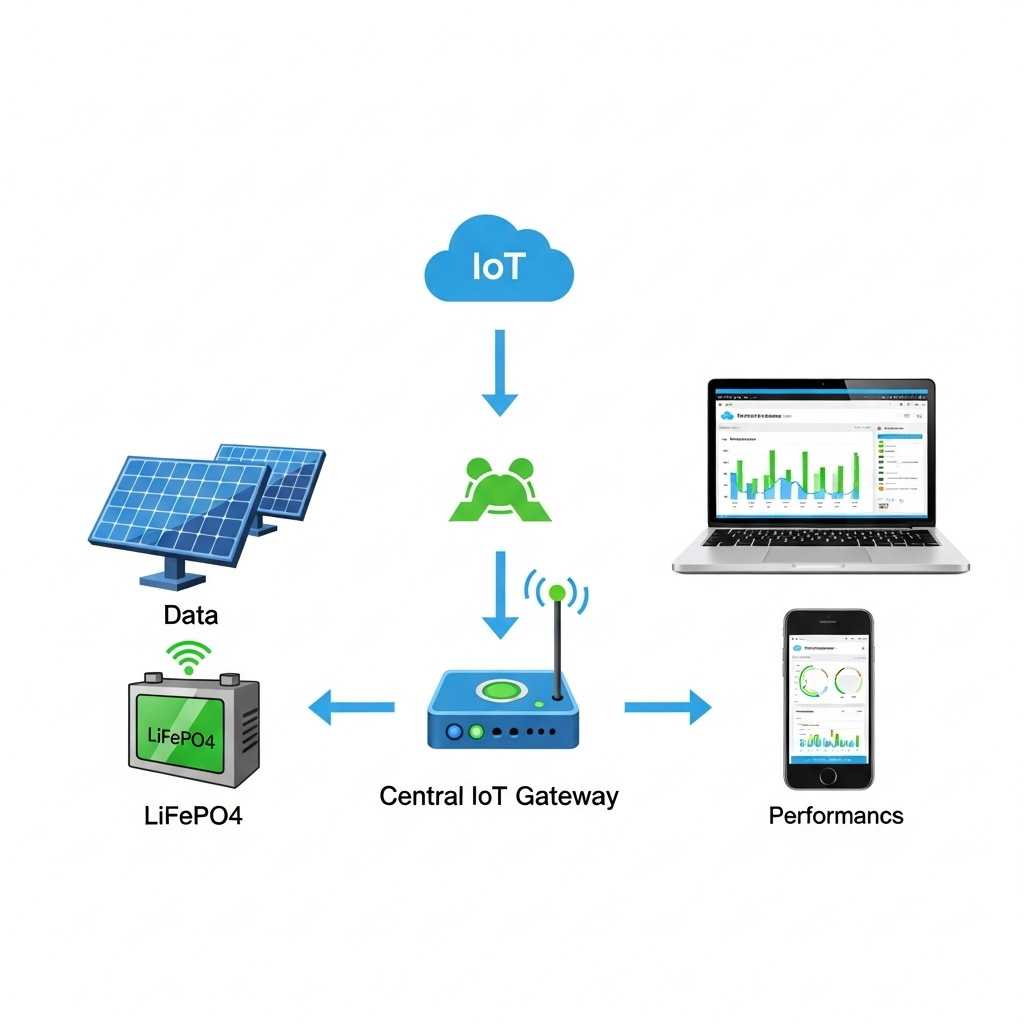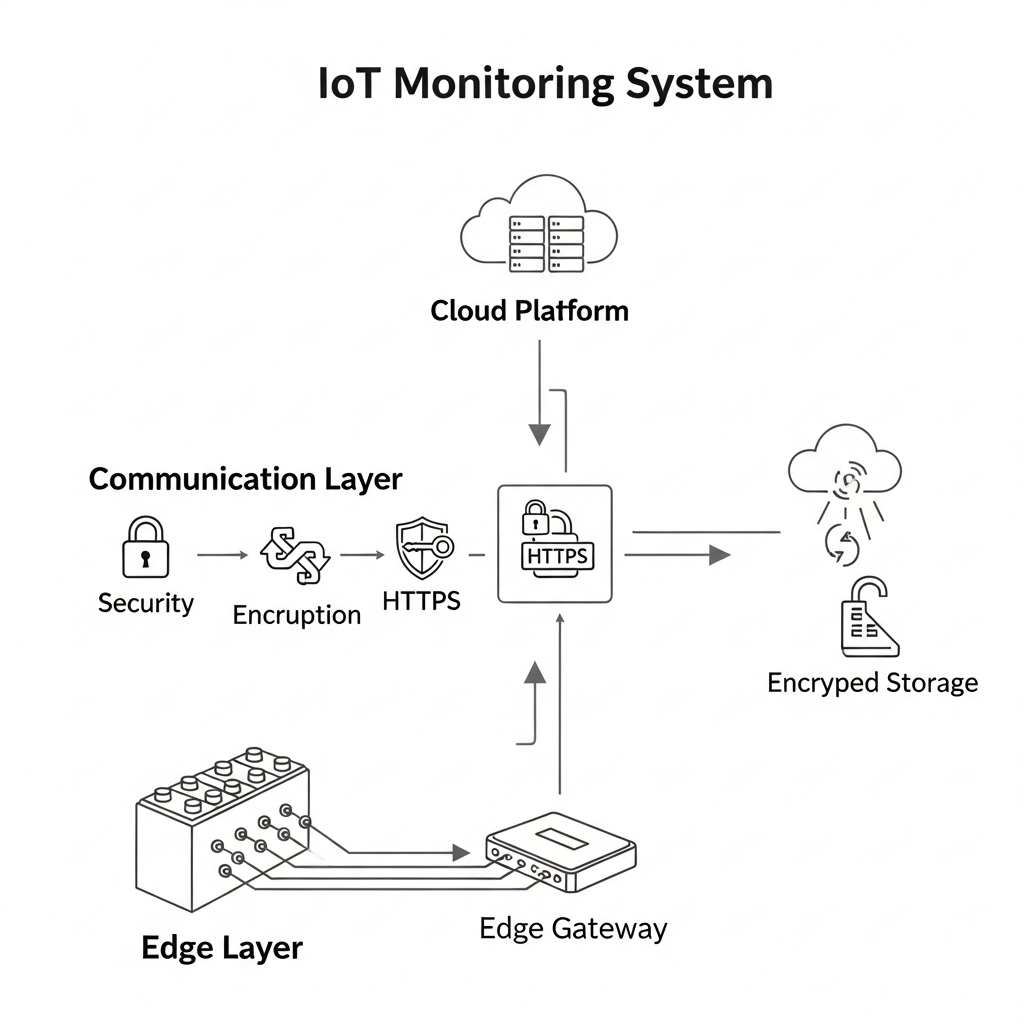A photovoltaic (PV) and energy storage system is a significant investment in energy independence. But simply installing panels and batteries is not enough. To truly maximize performance and financial returns, you need visibility into how your system operates. A robust PV-Storage cloud monitoring platform provides this visibility, but its value depends entirely on tracking the right metrics. Going beyond simple energy production numbers unlocks a deeper understanding of system health, efficiency, and long-term value.
Effective monitoring transforms raw data into actionable intelligence. It allows asset owners and operators to identify issues proactively, optimize energy usage, and verify that the system is delivering its expected financial benefits. This article details the essential metrics your cloud monitoring platform should provide across operational, performance, and financial categories.
Foundational Metrics: Monitoring System Health and Availability
Before analyzing performance, you must confirm the system is online and functional. Foundational metrics provide a baseline for system reliability and are the first line of defense against downtime.
Uptime and Availability
Availability is a primary performance factor for any energy asset. This metric tracks the percentage of time your PV array, inverter, and battery storage are operational and ready to perform. A high availability rate (often above 99%) indicates a reliable system. A sudden drop can signal a hardware failure, a communication loss, or a grid outage, prompting immediate investigation.
Equipment Status and Fault Alerts
Real-time status updates for individual components are critical. Your monitoring platform should clearly indicate if an inverter is online, a battery is charging, or if a component has registered a fault. Instantaneous fault alerts—delivered via email, SMS, or a dashboard notification—enable rapid response. This shifts maintenance from a reactive, and often costly, process to a proactive one, minimizing potential energy losses and equipment damage.
Communication Link Quality
An IoT monitoring system is only as good as its connection. Metrics on communication link quality, such as signal strength (for cellular connections) or data packet success rates, are vital. A poor or intermittent connection can lead to data gaps, making it impossible to accurately assess performance or diagnose problems. Monitoring the connection itself ensures the integrity of all other data you collect.
Performance Metrics: Gauging Energy Generation and Efficiency
Once you confirm the system is operational, the next step is to measure how well it performs. These metrics help you evaluate if the system is meeting its production targets and operating at peak efficiency.
Power Output (kW) and Energy Generation (kWh)
Power (kW) is an instantaneous measurement of how much electricity your system is producing at a specific moment. It is useful for checking real-time response to weather conditions. Energy (kWh) is the total amount of electricity generated over a period, such as a day or a month. This is the primary metric for tracking production against historical averages and energy bill calculations. According to a study from the International Renewable Energy Agency, Solar PV supply chains: Technical and ESG standards for market integration, using kWp (kilowatt-peak) as a functional unit is essential for granular assessments of PV module sustainability.
Performance Ratio (PR)
Performance Ratio is one of the most important indicators of a PV system's overall health. It compares the actual energy generated to the theoretical maximum possible under given solar irradiance and temperature conditions. A high PR (typically 80% or more) means the system is efficiently converting sunlight into electricity. A declining PR can indicate issues like panel soiling, degradation, or inverter problems. For a deeper analysis of factors affecting system output, you can review this comprehensive reference on solar storage performance, which details how to establish performance benchmarks.
System Efficiency
Efficiency metrics pinpoint where energy is lost. Key figures include:
- Inverter Efficiency: Measures how effectively the inverter converts DC electricity from the solar panels or battery into usable AC electricity for your home. Modern inverters often achieve efficiencies over 97%.
- Battery Round-Trip Efficiency (RTE): This shows how much energy you get back from the battery compared to the amount you put in. A typical lithium-ion battery has an RTE of 90-95%, meaning 5-10% of the energy is lost in each charge-discharge cycle. Tracking RTE helps identify battery degradation over time.
Storage-Specific Metrics: Optimizing Battery Performance and Longevity
Battery storage introduces its own set of critical metrics focused on health, safety, and operational management. Proper monitoring is essential for maximizing the battery's lifespan and ensuring safe operation.
State of Charge (SoC) and Depth of Discharge (DoD)
SoC represents the current charge level of your battery as a percentage, similar to the battery indicator on your phone. DoD is the inverse, indicating how much of the battery's total capacity has been used. For example, discharging a battery to 20% SoC corresponds to an 80% DoD. Managing DoD is crucial because consistently deep discharges can accelerate battery degradation and reduce its lifespan.
State of Health (SoH) and Cycle Count
SoH is a measure of a battery's condition relative to its original capacity. A new battery starts at 100% SoH, which gradually decreases over its life. Cycle count tracks the number of times the battery has been charged and discharged. Both metrics are vital for predicting when a battery might need replacement and for assessing the long-term value of the asset. Cloud-based battery management system (BMS) diagnostics use this data for predictive maintenance.
Battery Temperature and Voltage
Temperature is a critical factor for battery safety and longevity. High operating temperatures accelerate chemical degradation, permanently reducing capacity. A robust monitoring platform tracks individual cell and pack temperatures, triggering alerts or shutdown protocols if they exceed safe limits. As noted in IRENA's report on Quality infrastructure for smart mini-grids, proper control and monitoring are fundamental for preventing hazards like thermal runaway. Tracking cell voltage helps identify imbalances within the battery pack, which can be an early indicator of developing faults.
Financial and Economic Metrics: Translating Performance into Value
Ultimately, a PV-storage system is a financial asset. A sophisticated cloud platform should connect technical performance to economic outcomes, providing a clear picture of your return on investment.
Levelized Cost of Storage (LCOS)
LCOS represents the total lifetime cost of a battery system divided by its total expected energy output. It provides a standardized way to measure the cost per kilowatt-hour of stored and discharged energy. As the International Renewable Energy Agency points out in its Renewable Power Generation Costs in 2024 report, calculating LCOS can be complex because it depends on the battery's specific application, such as energy arbitrage or grid services. A monitoring platform that helps track operational data can provide the inputs needed for a more accurate LCOS calculation.
| Metric Category | Key Metrics | Why It Matters |
|---|---|---|
| System Health | Uptime, Fault Alerts, Communication Status | Ensures the system is online and reliable. Enables proactive maintenance. |
| Performance | Energy Generation (kWh), Performance Ratio (PR), System Efficiency | Measures if the system is meeting production targets and operating efficiently. |
| Battery Health | SoC, DoD, SoH, Temperature, Cycle Count | Optimizes battery lifespan, ensures safe operation, and predicts replacement needs. |
| Financial | Self-Consumption Rate, LCOS, ROI | Translates technical performance into tangible financial returns and value. |
Self-Consumption and Grid Interaction
For a grid-tied system, a key goal is to maximize self-consumption—the percentage of solar energy you use directly in your home. Monitoring platforms should track how much energy is self-consumed, how much is exported to the grid, and how much is imported from the grid. These metrics directly quantify your level of energy independence and show how effectively your battery is shifting solar energy for use during non-sunny hours.
Return on Investment (ROI) and Payback Period
High-level financial dashboards should synthesize all the operational and performance data to track ROI and payback period. By combining energy generation data with local utility rates and system costs, the platform can provide a clear, ongoing calculation of financial performance. This validates the initial investment and demonstrates the real-world value the system creates over time.
A Forward-Looking Perspective
Effective PV-storage monitoring is not about watching a single number. It is about building a comprehensive picture of system performance by integrating operational, efficiency, and financial data. The right metrics, delivered through a capable IoT cloud platform, do more than just report what happened in the past. They provide the insights needed to optimize asset performance, extend equipment life, and maximize financial returns, securing your path toward true energy independence.
Frequently Asked Questions
What is the most important metric for a home PV-storage system?
While all metrics are interconnected, the self-consumption rate is arguably one of the most important for a homeowner. It directly measures how effectively you are using your own solar power to reduce reliance on the grid, which is the primary driver for cost savings and energy independence.
How does cloud monitoring help with predictive maintenance?
Cloud monitoring platforms collect and analyze long-term data trends. By tracking metrics like a declining Performance Ratio (PR), increasing battery temperatures, or voltage imbalances between battery cells, the system can identify subtle signs of degradation or potential failure long before a critical fault occurs. This allows you to schedule maintenance proactively, preventing downtime and more expensive repairs.
Why is round-trip efficiency important for a battery?
Round-trip efficiency (RTE) directly impacts the financial value of your storage system. An RTE of 90% means that for every 10 kWh of energy you store, you only get 9 kWh back. The lost 1 kWh is a direct energy and financial loss. Tracking RTE over time is also a good way to monitor battery health, as a significant drop in efficiency can indicate degradation or other internal issues.





Leave a comment
All comments are moderated before being published.
This site is protected by hCaptcha and the hCaptcha Privacy Policy and Terms of Service apply.